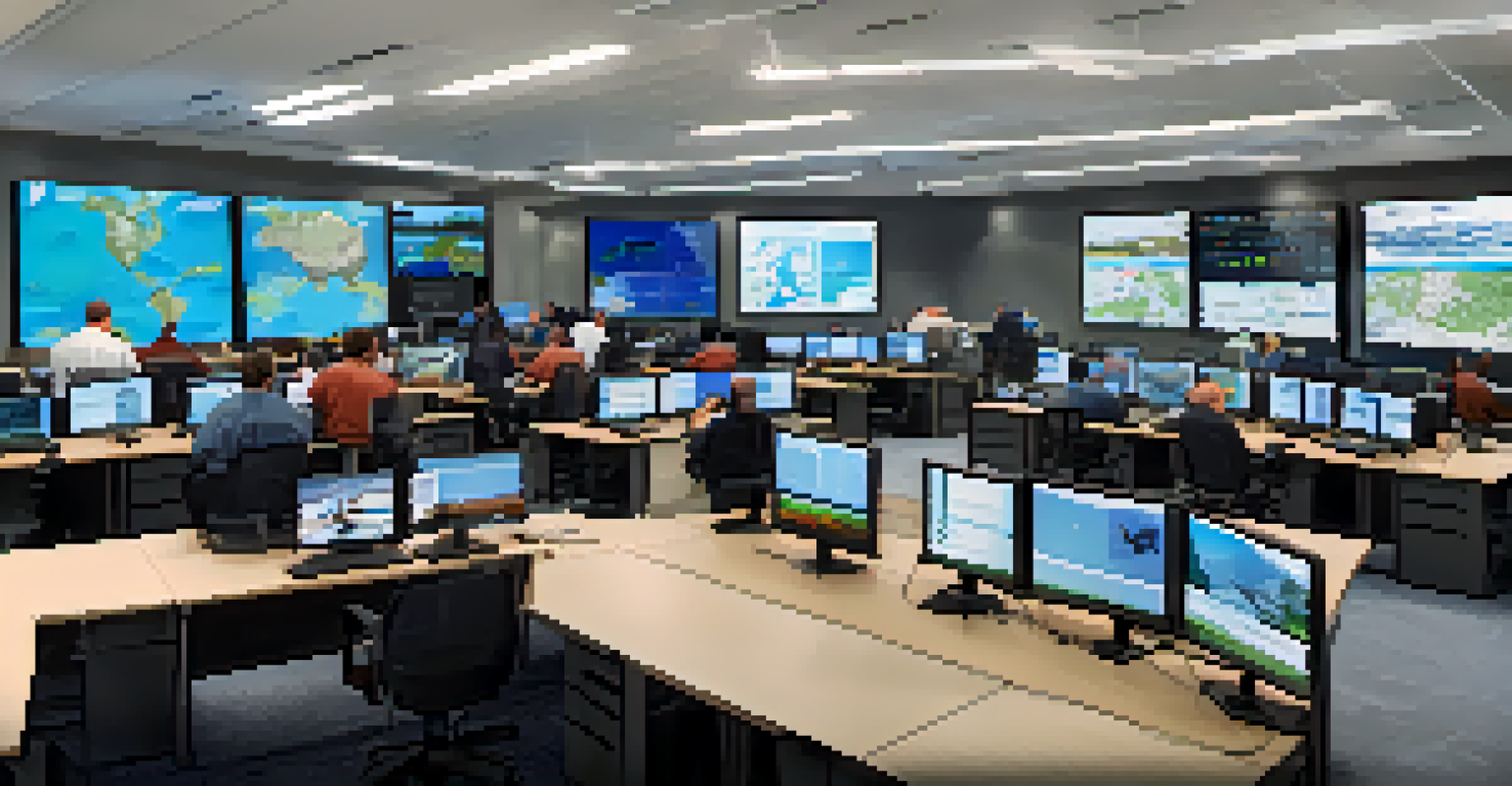Impact of Climate Change on California's Disaster Recovery

Understanding Climate Change in California's Context
Climate change refers to long-term shifts in temperatures and weather patterns, primarily caused by human activities. In California, this manifests through increased temperatures, prolonged droughts, and more intense storms. These changes not only affect the environment but also stress infrastructure and emergency services, making disaster recovery a challenging task.
Climate change is not just an environmental issue; it's a humanitarian crisis that threatens our communities and economies.
For instance, the frequency of wildfires has escalated dramatically over the past few decades, often overwhelming local resources. The 2020 wildfire season was one of the worst on record, illustrating the urgent need for effective disaster recovery strategies. As California grapples with these changes, understanding their impact is crucial for future preparedness.
Moreover, climate change doesn’t operate in isolation; it intersects with social issues, such as housing inequality and access to resources. This intersection complicates recovery efforts, as marginalized communities often bear the brunt of these disasters.
The Role of Infrastructure in Disaster Recovery
Infrastructure plays a pivotal role in how quickly and effectively a community can recover from disasters. Roads, bridges, and utilities must withstand the increasing severity of climate-related events. However, in many parts of California, aging infrastructure is struggling to keep up with these demands, leading to delays in recovery efforts.

Take, for example, the aftermath of the 2018 Camp Fire, which devastated the town of Paradise. Recovery was hampered by damaged roads and downed power lines, illustrating the critical need for resilient infrastructure. Investing in upgrades can mitigate these issues and ensure that communities bounce back more swiftly.
Climate Change Impacts California
California faces severe climate change effects like wildfires and droughts, necessitating urgent disaster recovery strategies.
Additionally, climate change necessitates a reevaluation of infrastructure planning. Solutions like green building practices and smarter urban design can help create a more resilient framework for future recovery efforts.
Emergency Management Strategies in a Changing Climate
Emergency management is the backbone of disaster recovery, involving planning, response, and recovery efforts. As climate change alters the landscape of natural disasters, strategies need to evolve accordingly. This includes not only improving response times but also anticipating the types of disasters that may occur more frequently.
The greatest threat to our planet is the belief that someone else will save it.
For instance, emergency managers are increasingly focusing on multi-hazard preparedness, as communities may face overlapping threats like wildfires and floods. Training programs must adapt to include these new scenarios, ensuring that responders are equipped to handle various emergencies effectively.
Moreover, integrating technology into emergency management can enhance response and recovery efforts. Tools like real-time data analytics can help predict disasters and facilitate decision-making during crises, ultimately saving lives and resources.
Community Resilience and Local Involvement
Community resilience refers to a community's ability to withstand and recover from disasters. Engaging local populations in disaster recovery planning is essential, as they often have valuable insights into their unique vulnerabilities and strengths. When communities are involved, recovery efforts can be more tailored and effective.
For example, neighborhood groups in areas prone to flooding have developed local flood response plans that enhance community preparedness. These initiatives not only empower residents but also foster a sense of ownership over recovery efforts. When people understand their role in the process, they are more likely to act proactively during emergencies.
Infrastructure Needs Resilience
Aging infrastructure in California hampers recovery efforts, highlighting the need for upgrades and smarter planning.
Furthermore, fostering community resilience involves building social networks that can support individuals during and after a disaster. By strengthening these connections, communities can enhance their collective ability to recover from climate impacts.
Financial Implications of Climate Change on Recovery
The financial burden of recovering from climate-related disasters is significant and continues to escalate. Increased frequency of disasters means that federal and state funds are often stretched thin, leading to delays and gaps in recovery efforts. Understanding these financial implications is crucial for effective planning and resource allocation.
For instance, the Federal Emergency Management Agency (FEMA) has seen a rise in claims due to natural disasters. As costs mount, it becomes imperative for California to explore alternative funding sources, such as private insurance and community crowdfunding, to support recovery efforts. This diversification of funding can help mitigate the financial shock of future disasters.
Additionally, investing in preventive measures, such as infrastructure upgrades and community preparedness programs, can ultimately save money in the long run. By addressing vulnerabilities before disasters strike, California can reduce the overall economic impact of climate change.
Policy Changes for Enhanced Disaster Recovery
Effective disaster recovery requires sound policies that adapt to the realities of climate change. Policymakers must prioritize resilience in their planning, ensuring that recovery strategies are not just reactive but also proactive. This means integrating climate considerations into all levels of decision-making.
For example, zoning laws can be revised to discourage development in high-risk areas, reducing future disaster impacts. Additionally, policies that promote sustainable land use and environmental conservation can help mitigate the effects of climate change, ultimately aiding in recovery efforts.
Community Involvement is Key
Engaging local communities in disaster recovery planning enhances resilience and ensures tailored responses to unique vulnerabilities.
Public engagement in policy development is also crucial. When communities have a voice in shaping the policies that affect them, recovery efforts are more likely to meet their needs and foster long-term resilience.
Looking Forward: Preparing for Future Challenges
As California faces the realities of climate change, preparing for future challenges is essential for effective disaster recovery. This preparation involves not just immediate responses but also long-term strategies that prioritize sustainability and resilience. By taking a holistic approach, California can improve its recovery outcomes.
Education and awareness play a critical role in this preparation. By informing communities about climate risks and recovery processes, individuals can better understand their role in disaster preparedness. Workshops, community drills, and informational campaigns can empower residents to take action when disaster strikes.

Ultimately, addressing the impact of climate change on disaster recovery is a collective responsibility. Through collaboration among government agencies, communities, and businesses, California can build a more resilient future for all its residents.